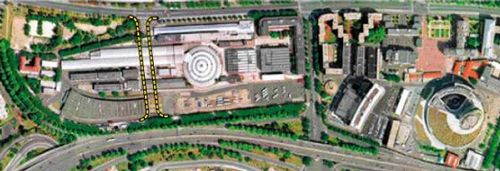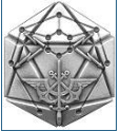Logistics on the Front Line
A few months ago, SLD sat down with General Jean-Pierre Bansard, in charge at the time of Logistics Organization within the MoD Chief of Staff, in order to gain a better understanding of the evolution of French support and logistics in light of the many undergoing reforms and the mutation of the battlefield.
This is the last of a three-part series previously published in French as a single article in ”Soutien Logistique Défense” in October 2009.
***

8. [SLD] Is it possible to establish a first assessment of the evolution towards increased jointness, as far as support is concerned?
Things have to be put into perspective: in my view, the process towards a joint approach in logistics and support has been set in motion ever since 1993, since it is at that time that were created, within the Chief of Staff, the MoD’s joint structure for the coordination of logistics, as well as the first joint support center (i.e. the CIRRM, which stands in French for “Centre Interarmées de Réparation de la Munition Mistral” and translates in English as “Joint Maintenance Center for the Mistral Ammunition”). One should not forget, in addition, that, at the time, a joint medical support service, known as the SSA for “Service de Santé des Armées“, as well as a joint fuel service, known as the SEA for “Service des Essences des Armées“, already existed.
- From 1993 to 2000, progress towards a joint support concept had been stammering and experimenting, but it did go forward while leading to the first major achievement, i.e. the creation of a specific structure in charge of the readiness of military air assets across the board, called SIMMAD (“structure intégrée de maintien en condition opérationnelle des matériels aéronautiques de la défense“).
- Then, from 2000 to 2005, tremendous conceptual evolutions took place, but could not easily be implemented within the French system, essentially because of modes of governance inherited from the 1982 Decree on the Chiefs of Staff’s responsibilities. Once replaced in May 2005 by the Decree 2005-520, the door was open for deeper structural change, from which stem most of today’s reforms: the establishment of a new Joint Support Command called COMIAS (for ” Commandement interarmées du soutien” ), which is soon to be implemented, is an example of how far we have gone and the hope is that the whole process will actually be finalized with the launching of the “French Pentagon”, within which all defense administrations are to be centralized in Balard by the end of 2014.
As mentioned before, the RGPP did not create a joint approach to logistics and support out of the blue, since it had been on track for quite a while: what it did, though, is act as a catalyst by accelerating the pace of reforms already engaged.
We thus have some experience regarding joint support in a broad sense. What is truly groundbreaking as far as general management and joint support are concerned is however the creation of the defense bases (BDDs, for “Bases de défense“) and the merging of the services traditionally in charge of support functions (referred to as “Commissariats” in France): it is this mix which constitutes the backbone of the current evolution towards jointness.
Can you highlight some of the hurdles – cultural, economical, social, etc – to overcome?
Turmoil associated with cultural shifts should not be underestimated, especially given the fact that the defense bases do not exclusively deal with military personnel. All units, training, services and administrations from the ministry of defense are to be assembled within the defense bases: this means that all civilian and military staff belonging to the armed forces, joint administrations, the acquisition office (DGA), as well as the management office (the SGA for “Secrétariat général pour l’administration”) are affected by such an evolution.

Of course, it will be necessary for everyone to get to know each other and learn to work together within each BDD, but the success of the milestones already achieved towards increased jointness tends to prove that the challenge of cultural adaptation does not need to be overestimated either. Looking at SIMMAD or DIRISI ( “Direction Interarmées des Réseaux d’Infrastructure et des Systèmes d’Information de la défense“, i.e. the joint agency in charge in France of military telecommunications infrastructure and information systems) is enough to realize that the focus of everybody on a common mission constitutes the best catalyst for the emergence of a common culture. Commanding officers of these new BDDs will be selected on a joint basis, based on practical commanding experience and according to their ability to manage and handle such a challenging and demanding mission. The base commander must be the conductor as well as the referee between the supported units and those supporting it. But he also plays a crucial role as far as the outside environment of the base is concerned. He will be the one in charge of the sound integration of the local defense community within the socio-economic environment, as well as regarding the relations with the civilian defense authorities, local officials, administration officials and social players.
However, as far as the support pillars of the bases, the GSBdDs, are concerned, the logic behind the reforms opens the door for civilian or military personnel to be in charge of the latter, depending on the nature and the composition of the forces to be supported : when mostly supporting deployable units, the GSBdDs’ commandment will be military; on the other hand, when supporting non-deployable units, such as military academies, the GSBdDs could be lead by an experienced civilian, especially tailored for such a demanding job.
This “civilianization” of the GSBdDs to be experimented in 2010 is not limited to its leadership, but concerns everyone in them: globally, 60% of support staff are currently military versus 40% civilian. Such a ratio is to be progressively reversed as the reform is being implemented and in accordance with the personnel replacement pace. Disparities among the GSBdDs may remain however in order to go along with each base’s specificities: the most operation-oriented ones will have rather militarized GSBdDs, but others for which operational missions will be marginal could include up to 80% civilians.
However, the defense bases will be facing much more concrete difficulties, such as the complexity and diversity of current regulation frameworks. The harmonization of regulations constitutes an arduous and urgent necessity, with more than 15,000 texts for review, some of them, such as certain maritime edicts, dating back to 1681!
A defense base must form a coherent ensemble and this coherence starts with the many regulations that regulate our daily lives, such as the one pertaining to food or clothing. Regulations’ mismatch generates cacophony and inextricable situations and can actually lead to unfairness when dealing with individual situations. In my fourteen years of joint experience, I have indeed been confronted on a daily basis with this issue of lack of regulations’ harmonization, which resulted in inequalities affecting individuals in many areas: not only in clothing, food, or lodging, but also regarding various allowances and compensations: even food allowances for military dogs differ among the services of the armed forces! Such a situation will no longer be tolerable within a defense base.
Such an harmonization process is going to be a major endeavour, if not today’s major endeavour, which ambition can actually look rather scary. However, we have started the process and we have already shown signs of progress. This preliminary work has allowed us to have a better feel for the domains which still remain to be covered and for the regulations which need to be recast. We have also become aware that this harmonization will not be fully achieved before the BDDs are completely operational, since our goal, which is already rather ambitious, is to achieve the overall harmonization of our regulations’ corpus by the end of 2012. This constitutes an indispensible pre-requisite for the harmonization of the joint information systems, which are themselves the necessary instruments for a successful evolution towards true jointness.
How is this process perceived within the French armed forces?
As can be expected when we deal with such a vast and thorough reform, reactions are mixed. The bottom-line of these reforms, which is to share and regroup support assets, are now generally accepted. On the other hand, the scope of personnel cuts and its potential impact on the way units function tend to generate some anxiety, which is rather logical. We must therefore show in concrete terms that the new support modes do function in a satisfactory manner and that the armed forces’ readiness remains guaranteed.
This is the reason why we have chosen a pragmatic approach by starting in 2009 with an experimentation aiming at validating the concept,and then, in 2010, with the development of a prototype series in order to master and polish the practical operating modes, before a full-scale deployment in 2011.
Is there an impact on the local economy?
With the professionalization of the armed forces in 1996, it was decided to leave as many military infrastructure in place as possible in order to contribute to local economies. Looking back, we have found out that the results of such a dispersion, nay even atomization, of our posture were a very poor ratio between support and operational forces as well as prohibitive support costs. The only way to achieve savings as far as support costs are concerned is to optimize them via the regrouping and densification of these facilities. Hence the concept of BDDs.
The impact of this reform and the resulting territorial restructuring on local economies is not marginal: it has thoroughly been taken into consideration by the government, which set up an inter-agency administration in order to best manage the transition at the same time and in the same way as is being done across the board within the executive branch.
The MoD is of course an active participant in this inter-agency organization and, in addition to dedicated funds, has set up under the aegis of a specific agency, the DAR (for “Délégation aux Restructurations“), a tailored territorial organization which contributes to a close cooperation between the various local economic players in France (i.e. the departments, regions and civilian defense areas).
———-
***Posted February 21st, 2010


